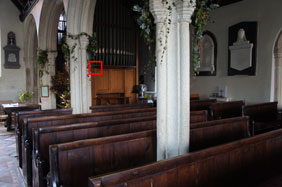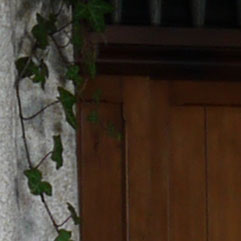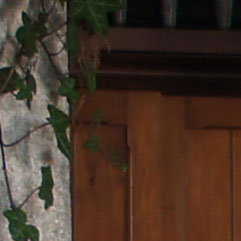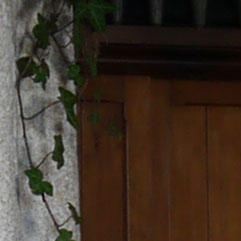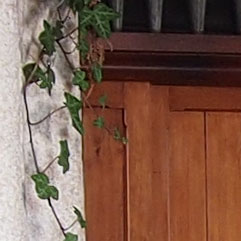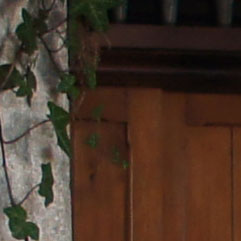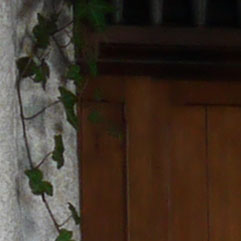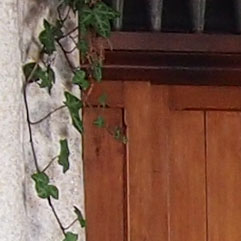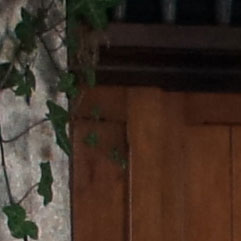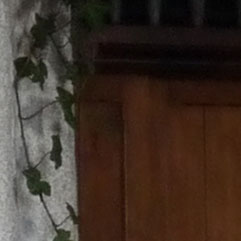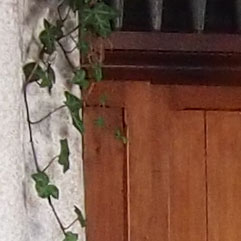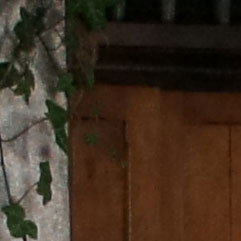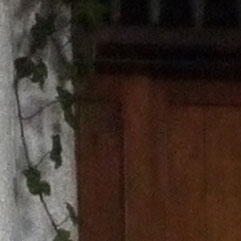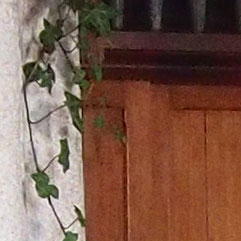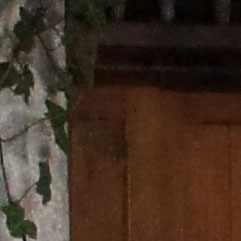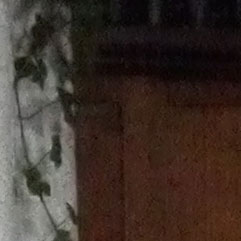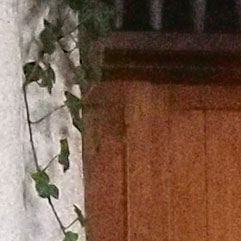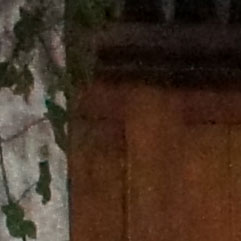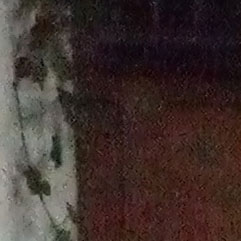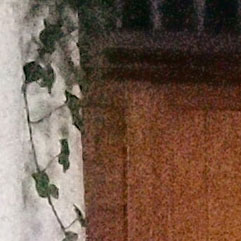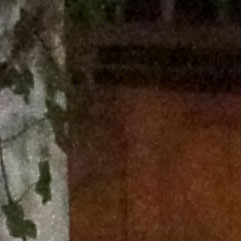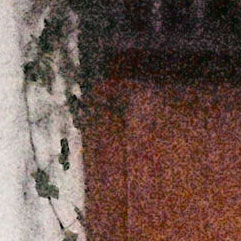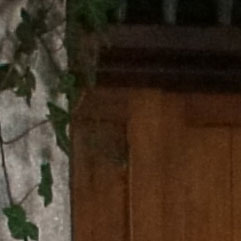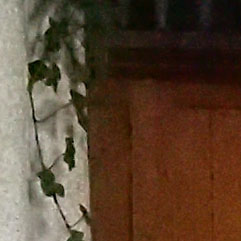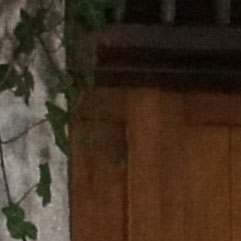Sony Alpha NEX-C3
-
-
Written by Gordon Laing
Quality
Sony Alpha NEX-C3 vs Panasonic Lumix GF3 vs Olympus Pen E-PL3 Resolution
|
Sony NEX-C3 |
Panasonic Lumix GF3 |
Olympus Pen E-PL3 | ||
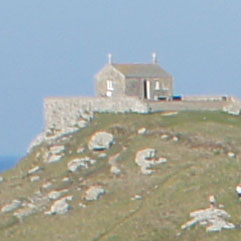 | 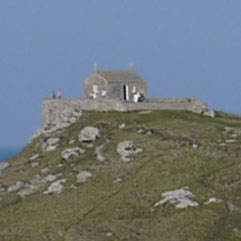 | 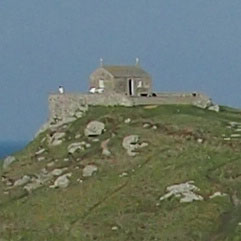 | ||
f5.6, 200 ISO |
f5.6, 160 ISO |
f5.6, 200 ISO | ||
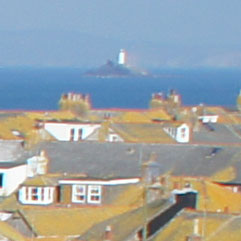 | 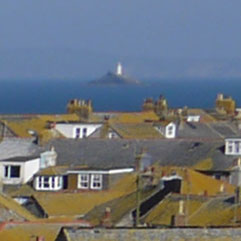 | 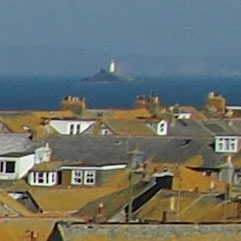 | ||
f5.6, 200 ISO |
f5.6, 160 ISO |
f5.6, 200 ISO | ||
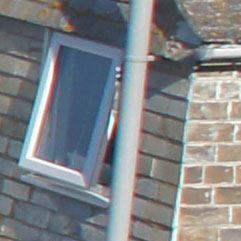 | 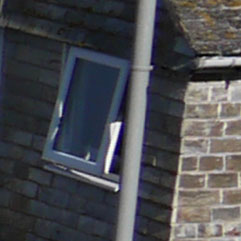 | 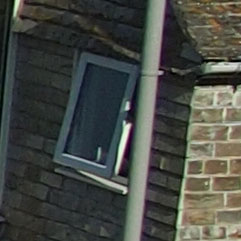 | ||
f5.6, 200 ISO |
f5.6, 160 ISO |
f5.6, 200 ISO | ||
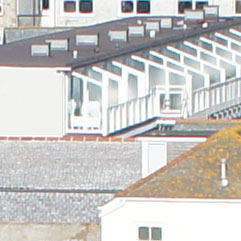 |  | 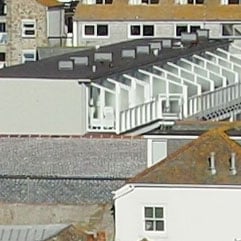 | ||
f5.6, 200 ISO |
f5.6, 160 ISO |
f5.6, 200 ISO |
Sony Alpha NEX-C3 vs Panasonic Lumix GF3 vs Olympus Pen E-PL3
Noise
The above shot was taken with the the Sony NEX-C3 in Program auto mode. The 18-55mm f3.5-5.6 kit lens was zoomed in slightly to provide the same field of view as 14-42mm kit lenses on the two Micro Four Thirds cameras, the sensitivity was set to 200 ISO and the exposure was 0.6 of a second at f3.5. The crops are taken from the area marked with the red square and presented below at 100%. At its base 200 ISO setting, the NEX-C3 crop is clean and well detailed with no visible noise. Like the outdoor real-life resolution crops, it looks a little soft to me, but I’d rather this than agressive processing. At 400 ISO there’s a slight texture to the detail, but it doesn’t look digital and the quality of the image detail remains very good. At 800 and 1600 ISO the granularity increases in more or less equal steps, but even at 1600 ISO these crops look good. It’s not that they lack noise, but there’s less of it than you’d expect at this ISO sensitivity setting and the processing of it has been very well judged to produce a result that avoids either the smearing or the harshness that usually mars images taken at this high a sensitivity setting. If you’re used to seeing our high ISO noise test results for compact cameras, particularly for 16 Megapixel models, the crops from the Sony Alpha NEX-C3 will look pretty impressive. Like any digital camera, the NEX-C3 produces more noise at higher ISO sensitivity settings, but the crucial question is how much more? The answer in the case of the NEX-C3 is not too much, or to put it another way, less than comparable models. Compared with the Sony NEX-C3 the Lumix GF3 crops start out well. At the lower ISO sensitivities there really isn’t a great deal in it, if anything the NEX-C3 crops look a little softer than those from the GF3. But as you climb the sensitivity range the NEX-C3’s bigger sensor advantage becomes more and more apparent. At 400 ISO the Sony crops, though still a little softer than the GF3’s nonetheless show a little more detail and at 800 ISO where noise is making a clearly visible impact on the GF3, the NEX-C3 is still keeping it well in hand. But it’s in the mid to high range where the NEX-C3s advantage really begins to tell and at 3200 ISO there’s at least a stop of difference between the high ISO noise performance of the two sensors. The Olympus Pen E-PL3 metering opted for slightly longer exposures than both the NEX-C3 and Lumix GF3 and as a result its a little easier to see the detail (and the noise) in the E-PL3 crops. At 200 ISO it’s too close to call, though arguably the Pen E-PL3 has the better of it. Beyond 400 ISO though, the NEX-C3’s bigger sensor advantage begins to tell. There’s still very good detail in the E-PL3 crops, but it’s being maintained by image processing that’s becoming just a little bit intrusive, certainly compared to the NEX-C3 crops. Another thing worth bearing in mind if good low light performance is important to you is that the NEX-C3 has two composite low light modes shown in the final two crops. Hand-held Twilight and Anti Motion Blur both provide a significant improvement in image quality over what you’d get in a single-shot mode with a high ISO setting. We’ve included the Pen E-PL3’s (non-composite) DIS low light mode for comparison. Now head over to our Sony NEX-C3 sample images to see some more real-life shots in a variety of conditions.
|

